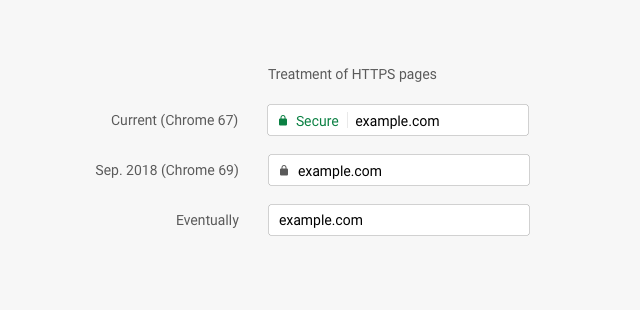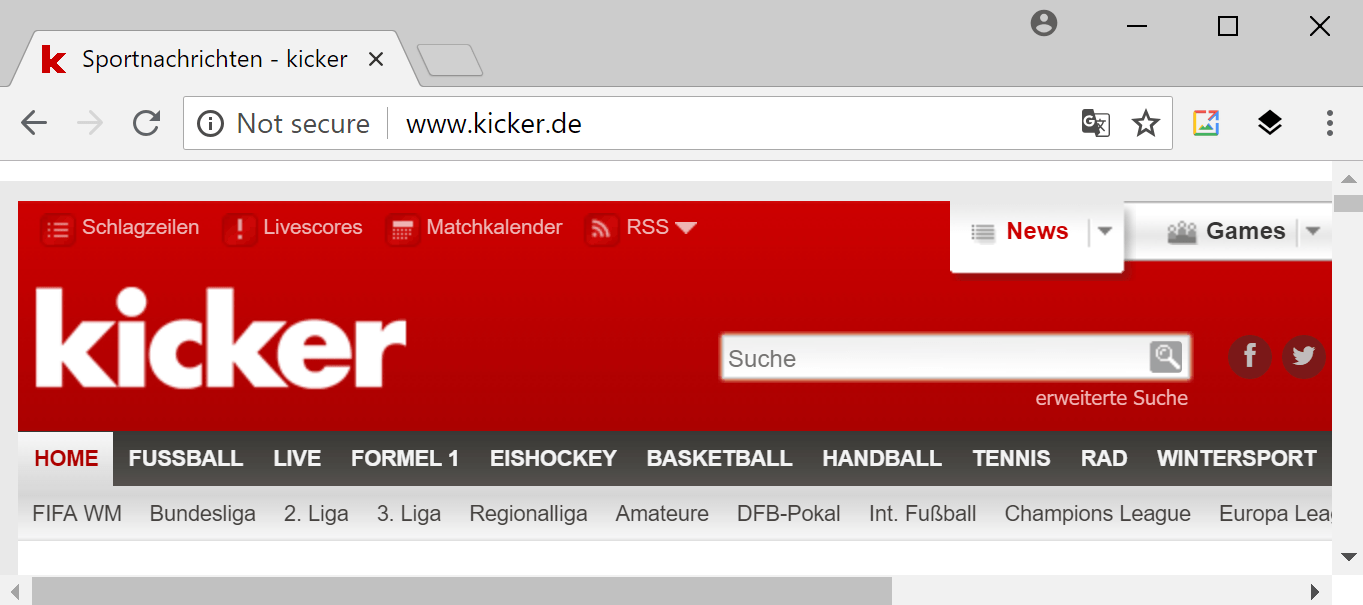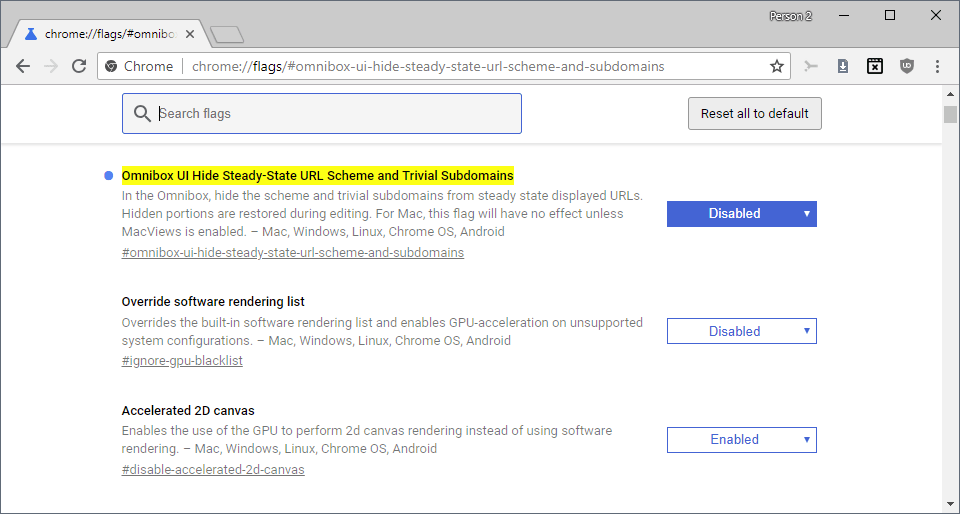What happened to HTTP and HTTPS in Chrome?
Chrome users who run version 69.x of the web browser will notice that Google changed how the address of webpages is displayed in the browser.
Chrome displayed the scheme, the http:// or https:// part of the address, previously in front of the address which highlighted the type of connection, e.g. a secure connection using encryption for https, to the user.
Starting with Chrome 69, Chrome omits http and https from the address. and replaced "secure" with a lock icon for https sites.

Google announced in 2018 that it would make changes to how the company's web browser Chrome would display the scheme and address of websites.
Google would remove the protocol from the address bar in Chrome for the desktop and Chrome for Android from Chrome 69 on. The "secure" label would be removed as well from Chrome leaving just a lock icon for a period of time in its place before it would be removed as well.
To summarize: Instead of displaying the full web address, which includes the scheme and the entire URL, Chrome displays only a lock icon and the URL in the browser's address bar.
Sites that use http, which is less secure and private, won't show the http:// scheme as well anymore but they will have an (i) icon placed in front of the address that indicates to users that the connection is not secure. Starting October 2018, sites that still use http will have a "not secure" label added next to their addresses in the Chrome address bar.

The change happens in Chrome 69 which is available on the Beta channel right now. The changes will hit the stable channel of the web browser in September 2018. The stable channel is used by the bulk of users and it will be interesting to see how they will react to the change.
- http:// -- removed from Chrome. Chrome displays an (i) icon and eventually a "not secure" label.
- https:// -- removed from Chrome. Chrome displays a "secure" label, eventually a "lock icon". Plans are underway to remove the lock icon in the future as well.
Note: Activation of the address bar and using the cursor afterward displays the scheme if the site uses https. Nothing is added when the site uses http.
Why is Google making the change?
One of the main reasons for making the change is the idea that https should be the default nowadays and that all sites should use it. So, instead of highlighting sites that use https with "secure" or another indicator, Google decided that it would be best to display nothing at all eventually as it should be the default for the majority of sites.
The company makes the change gradually, first by removing the "secure" indicator and the https scheme, then by removing the lock icon that replaced the two labels.
For sites that do use http it is the other way round. While Google will remove http from the address as well, it will indicate to users that the connection to the site is not secure.
How to undo the change?

Chrome users who run version 69 or newer of the browser can undo the change at this point in time. The option is powered by an experimental flag that may be removed by Google at any point in time.
For now though, it is possible to restore the display of the scheme and trivial subdomains.
- Load chrome://flags/#omnibox-ui-hide-steady-state-url-scheme-and-subdomains in the browser's address bar.
- Activate the menu next to it and select disabled.
- Restart Chrome.
Now You: What is your take on the change?
This article was first seen on ComTek's "TekBits" Technology News

- Log in to post comments